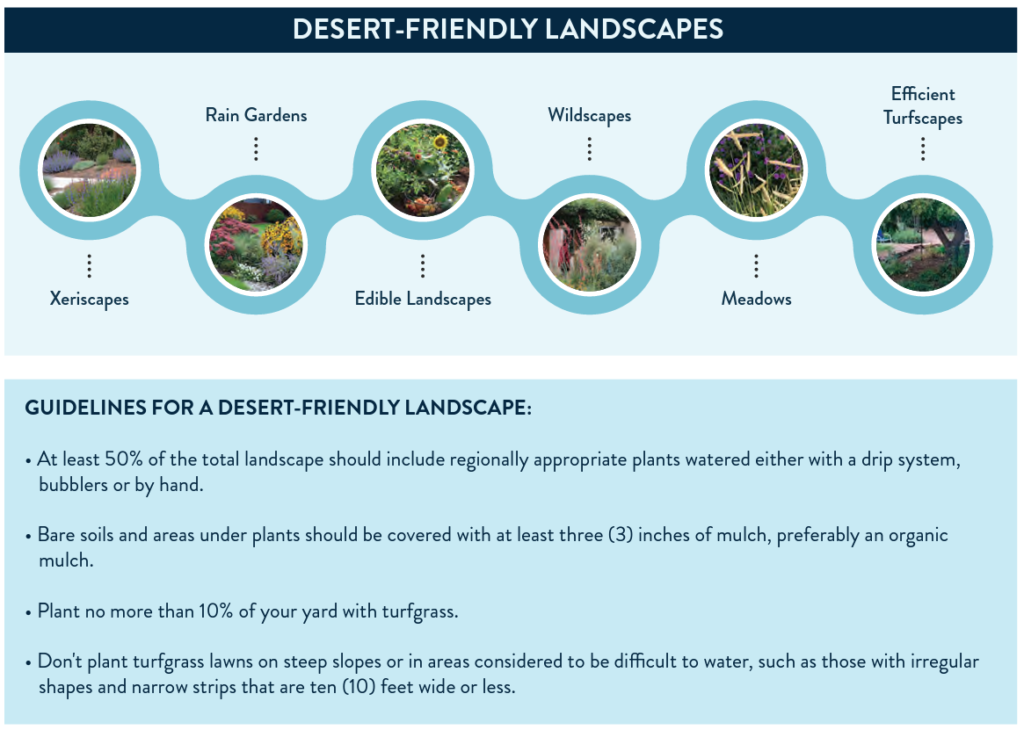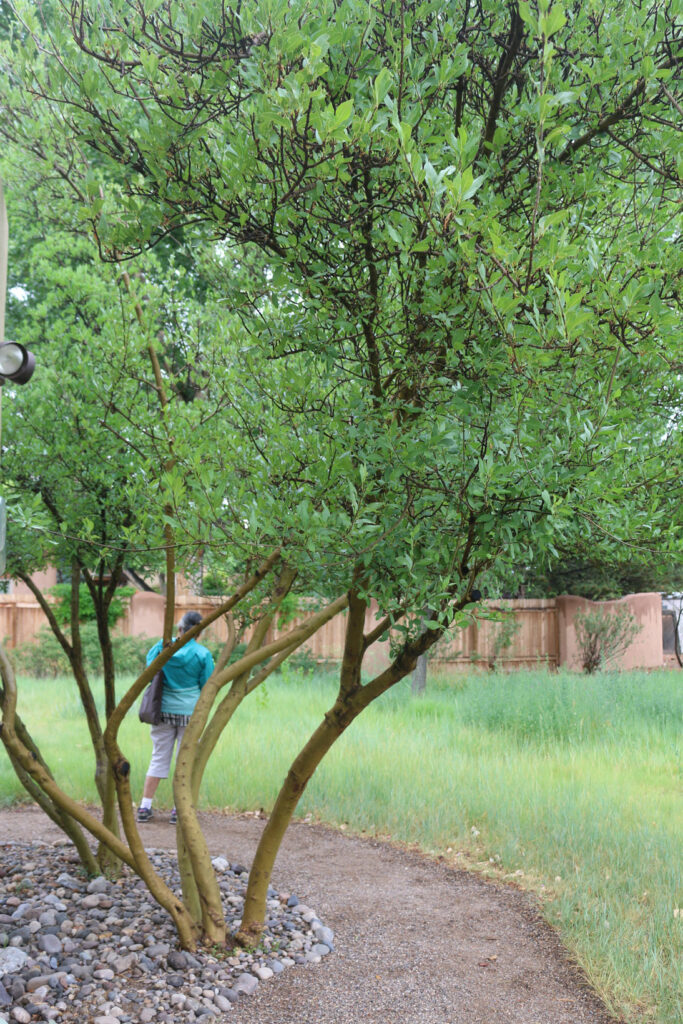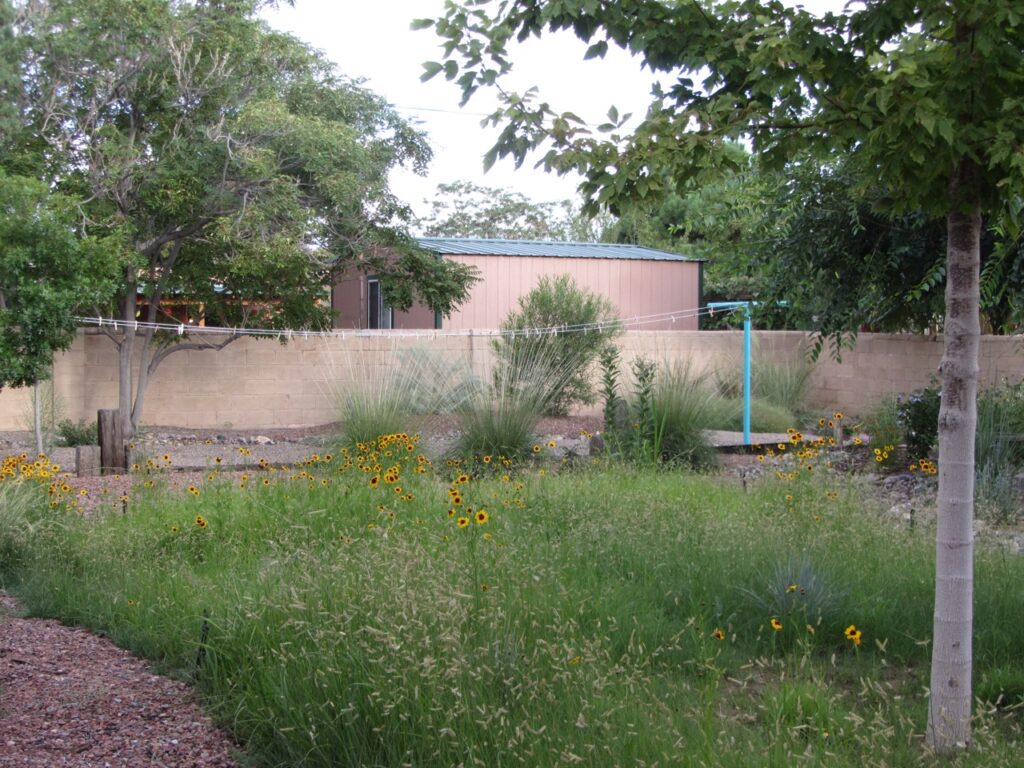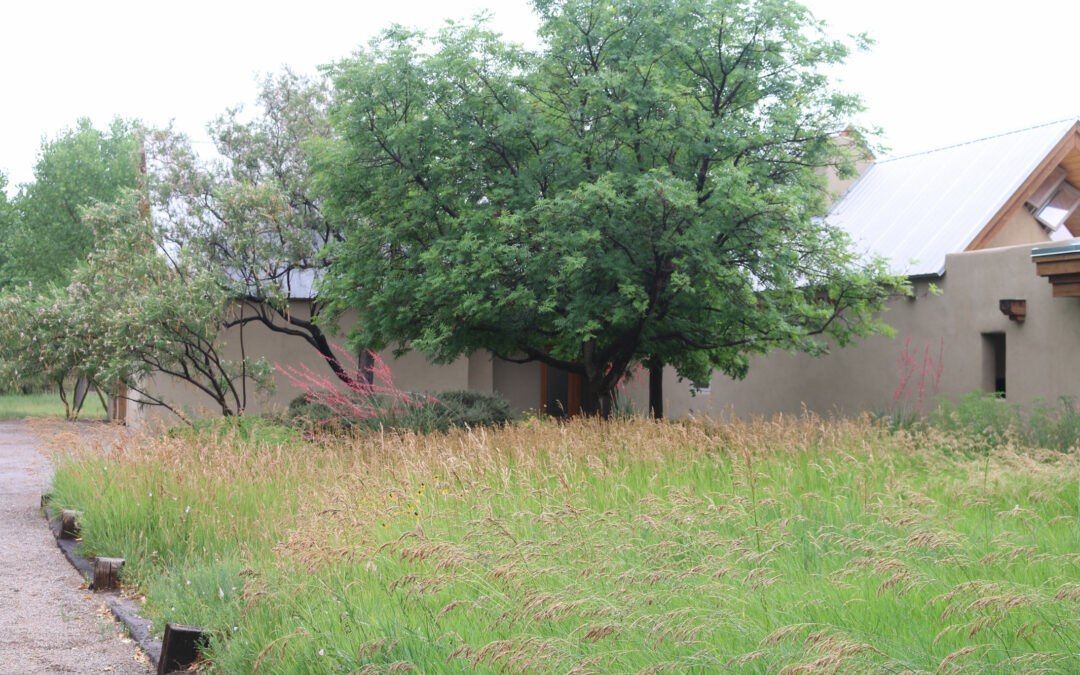The Albuquerque metro area has a wide variety of landscapes. These include desert friendly landscapes, lush pollinator friendly xeriscapes and wildscapes or prairie plantings where native grasses and wildflowers bring the feel of a prairie to a yard and attract wildlife. Rain gardens are specifically designed to make the most of natural precipitation, while edible landscapes have garden beds or edible plants interspersed throughout them. Efficient turfscapes have smaller areas of turfgrass and diverse plantings. Conventional turfscapes, with large areas of cool-season grasses and high-water-use foundation shrub plantings, are no longer considered desert friendly landscapes. The term “desert friendly” now describes a variety of landscapes that include beautiful, diverse plantings with increased resiliency achieved through efficient watering.


Wildscapes or prairie plantings take advantage of natural landscape techniquess and plant choices that attract wildlife. These types of landscapes include native warm-season grasses and a mix of native and adaptive plants, including wildflowers.
A wildscape may be designed to rely more heavily on natural precipitation to sustain established plants than a xeriscape. Both natural precipitation and temporary irrigation are needed at first. Establishment in the grass areas often takes three years and possibly longer for trees. Monitoring and removing weeds is critical during this early period. Wildscapes also require less frequent yet deeper watering than a regular cool season turfgrass lawn.

Pro Tips for Irrigation of Wildscapes:
• Consider a mix of high-efficiency sprayers or rotors (for the native grass area) and drip irrigation or inline dripline (for shrubs and trees) on separate zones. Specific zones can be turned off after the plantings are firmly established.
• If you are using rotors or spray irrigation in native grass areas, make sure they will clear the tall grass. Use rotors with a high angle of throw or 12-inch to 18-inch pop-up sprayers.
• Leave the irrigation system in place, even if the plan is to rely on natural precipitation, so supplemental watering is available during times of extreme heat or drought.
Learn more about specific types of gardening here:
Easy Edible Plants for First Time Growers
Water Harvesting for Residential Landscapes
5 Steps to Stunning Fall Container Gardens


